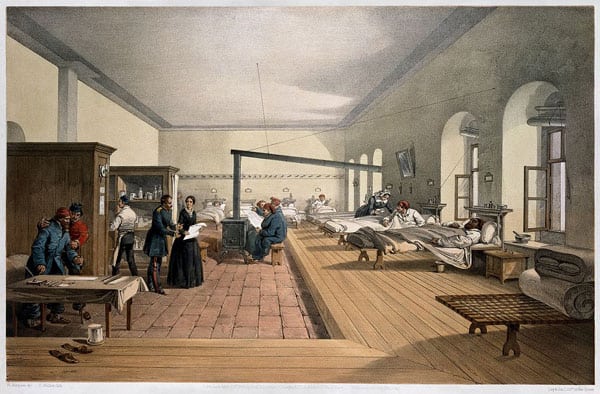
June 12, 2018; Los Angeles Times
The California Nurses Association (CNA) released data showing a sharp decline in the percentage of operating expenses devoted to charity care at the state’s nonprofit hospitals. According to CNA, the percentage drop in charity care expenditures from 2011 to 2016 was 34 percent; since 2013, the year the Affordable Care Act went into effect, hospitals have reduced their charity care expenditures by 42 percent.
As nonprofit institutions, hospitals receive billions of dollars in tax benefits and are required by law to provide charity care and other community benefits. As CNA explains, however, state regulations do not specify a required level of expenditures for charity care. In a press release, CNA Co-President Deborah Burger said, “It’s long past time for the state legislature to finally establish mandatory, minimum levels of charity care all hospitals must meet to maintain eligibility for nonprofit status, including to qualify for tax-exempt bonds, and to clearly define what constitutes charity care, as CNA has long advocated.”
California’s hospitals have responded to the new report by claiming that the Affordable Care Act has reduced the need for free and reduced-cost care. California has seen a significant reduction in the uninsured rate of adults under the age of 65, dropping from 17 percent in 2013 to 8.4 percent in 2016. Nonetheless, 2.9 million Californians remain uninsured, and many of those with insurance face high out-of-pocket costs that deter them from seeking medical care. The California Health Care Foundation reports that nearly half of those who report “delayed care” cite the reason as high cost.
Using publicly reported data, CNA reports that nonprofit general acute hospitals provided $1.1 billion on charity care in 2013. This fell to $651 million in 2016, a decline of 42 percent. As a percentage of total operating costs, the decline is even greater: from 1.92 percent in 2013 to 0.94 percent in 2016. Nonprofit hospitals, however, are doing well financially. Over the period 2013 through 2016, California’s hospitals saw net income of over $17 billion. If these dollars are not spent to benefit the community, then CNA is right to challenge the hospitals nonprofit status.
Sign up for our free newsletters
Subscribe to NPQ's newsletters to have our top stories delivered directly to your inbox.
By signing up, you agree to our privacy policy and terms of use, and to receive messages from NPQ and our partners.
But the full picture is murkier. Kaiser Permanente, for example, objected to the way CNA reported data on its expenditures. John Nelson, vice president of communications, told Becker Hospital News, “Overall, the amounts we are devoting to charity care across our integrated system are increasing: In 2011 we spent $249 million. Last year, we spent $379 million, a 52 percent increase. Our spending on charity care is increasing despite the implementation of the ACA. Although there are fewer uninsured people, there are more low-income patients that face real challenges when confronted with the high out of pocket costs (copays & deductibles) associated with their healthcare.”
A look at Cedars-Sinai Medical Center’s community benefits report raises additional questions. CNA reports that Cedars-Sinai’s expenditures on charity care dropped 83 percent from 2013 to 2016, but the medical center reports a small increase in its total community benefits contribution over this same period ($652,606,000 in 2013 and a $695,634,000 contribution in 2016). The shift in spending is toward uncompensated care for Medicare recipients as well as greater investment in community health education and research.
Understanding how hospitals spend taxpayer dollars is critical to debates regarding how to construct an equitable, accessible health care system for all Americans. CNA rightfully argues that in the absence of universal health insurance (as exists in Europe, Japan and Canada), charity care—both free care and reduced-cost care—should be widely available. Citing aggregate bad debt of nearly half a billion dollars in 2016, the nurses’ union contends that California hospitals are misusing public resources, pursuing families who can’t afford to pay rather than broadening the criteria for free care.
But one could argue that this lens is too narrow. Shouldn’t we be looking more broadly at hospital community benefit investments to ensure they are doing more than patching people up with charity care? Is it appropriate for California’s hospitals to move their community benefit spending from free care to interventions that might bring greater long-term benefits to health outcomes by addressing the social determinants of health, such as by investing in affordable housing or education?
In an editorial that appeared last week on PennLive, Vikas Saini and Shannon Brownlee of the Lown Institute challenge University of Pittsburgh Medical Center’s plan to build three specialty hospitals that will do little to improve the health of the local community. The authors argue that “UPMC should either be stripped of its tax-exempt status or face restrictions on this proposed expansion and be required to make a more meaningful investment in community health.” What CNA makes clear in their analysis of charity care is that holding our nonprofit hospitals accountable to our communities will require a higher standard regarding community benefit investments, both in terms of the level of commitment and where those dollars should go to provide the greatest impact on health and well-being.—Karen Kahn











